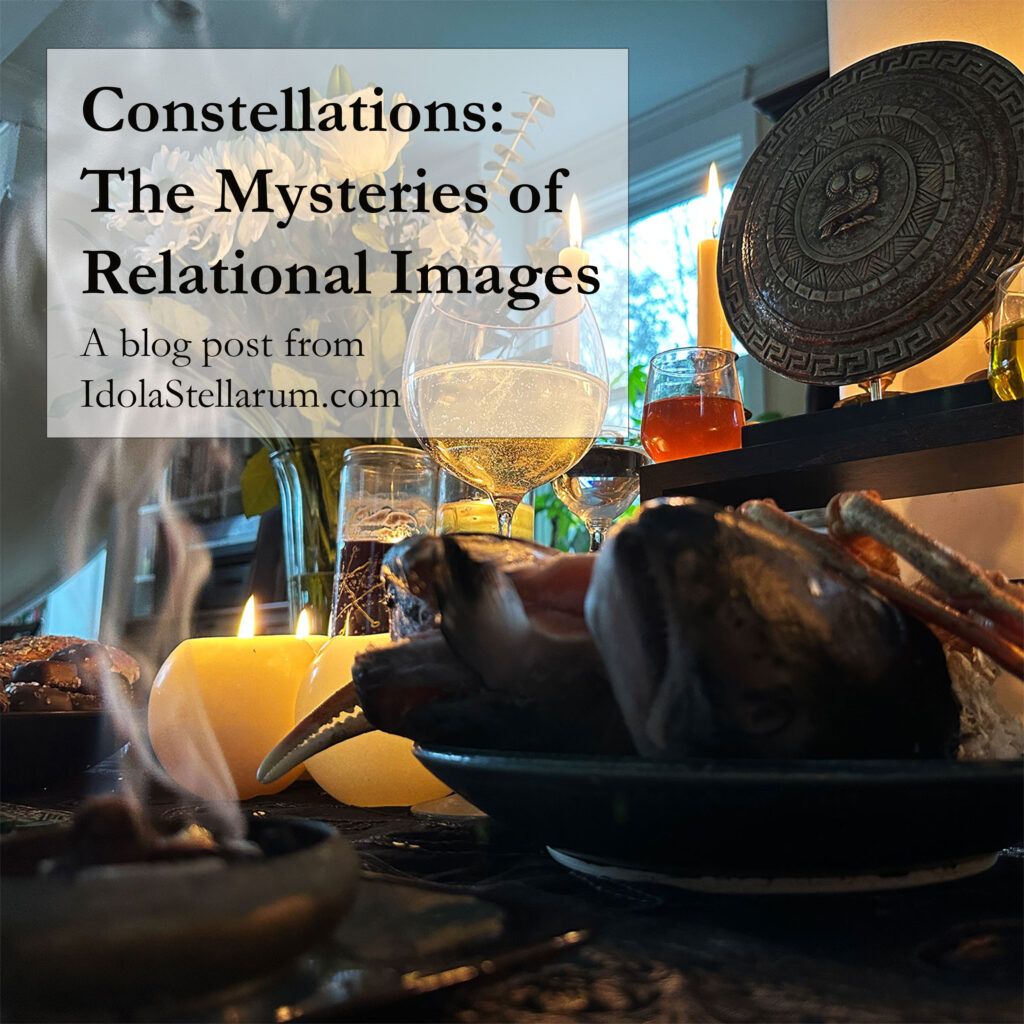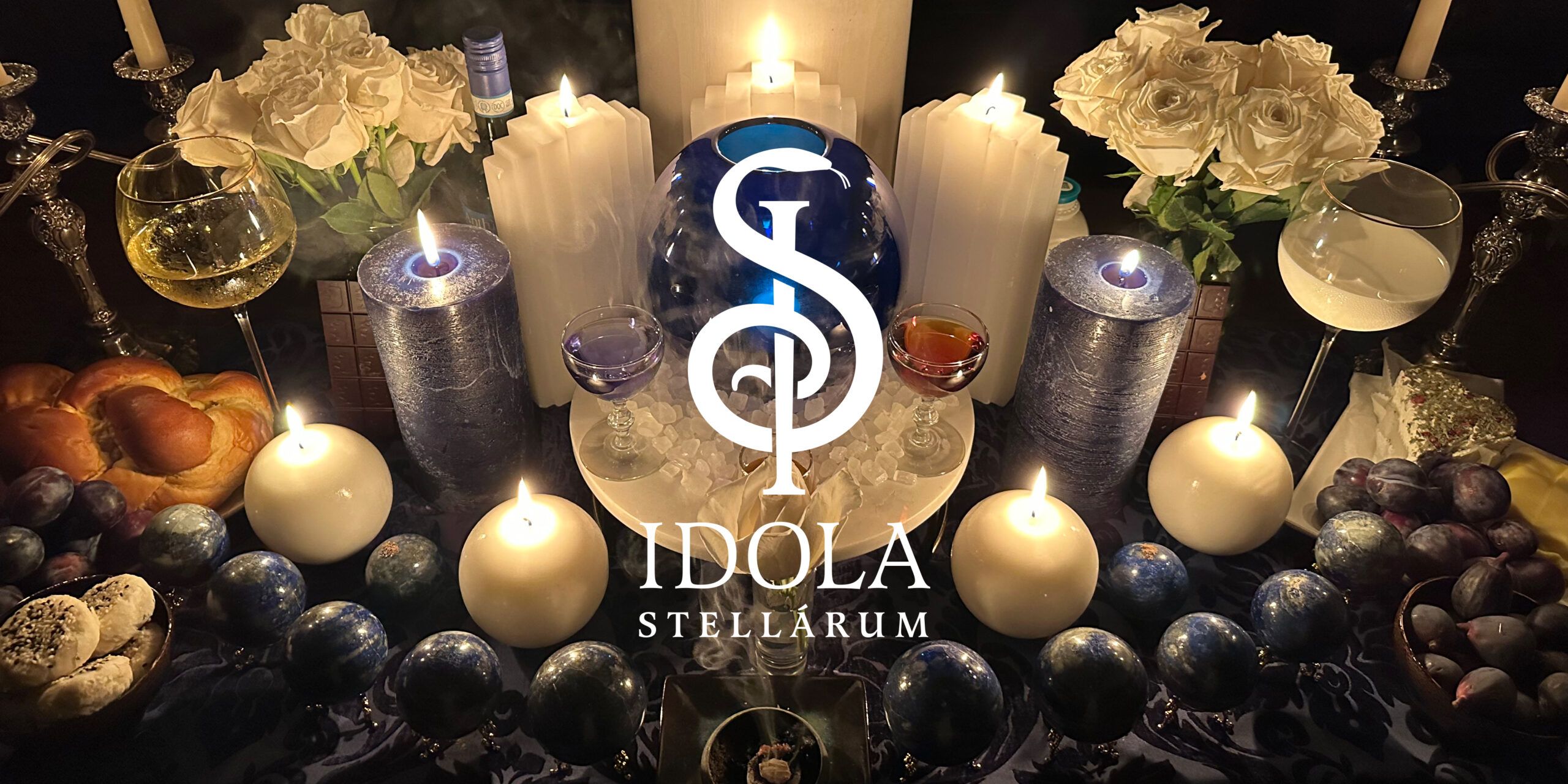Constellations: A Gateway Out of the Worldview of Materialism
Out of the various types of astrological talismans, constellation talismans pose one of the greatest challenges to any materialist worldviews.
For one thing, with the modern astronomical knowledge we have, some part of us knows that those stars are surely hundreds if not thousands of lightyears away from one another and in fact have little if any well-defined three-dimensional spatial relationship.
For another, given how contemporary cosmology teaches us that the universe sprung out of random, chaotic motion, some part of us might imagine that any grouping of stars could count as a constellation, and thus there is nothing essential about any given contingent grouping of stars.
And yet…
Go outside in the Northern hemisphere on a clear night with Ursa Major—also known as the Great Bear, the Big Dipper, the Plough—glowing in its place, and just try to tell yourself that those particular handful of bright stars do not belong together. Cultures throughout history across the globe have considered the stars of Ursa Major to belong together, if not in one form such as a constellation, as part of the same story or group of deities. This is the case with many constellations.
From within a materialist worldview, one could chalk this up to perceptual biases, accidents of pattern recognition, or biological prepared evolutionary quirks. And those may be part of the story. There is another story to tell, however, one that explains this perception not as an accident or illusion, but as an expression of a profound, innate capacity of humans for grasping the essences behind appearances.
The traditions of astrological magic in which we situate ourselves at Idola Stellarum derive in large part from the philosophies of late Platonism (so-called Neoplatonism). In this worldview, the celestials spheres are emanations from higher realities, ultimately reflecting Ideas in the Divine Mind. This Mind, or Nous, is not some separate, distant, abstract space, but something that we all participate in. In fact, Nous names not just the level of reality of the Divine Mind but also a faculty that we all have: our noetic faculty allows us to grasp the essences of things, and in particular provides a kind of access to the divine realm. Through the noetic faculty, or as a verb, through the act of noesis, we grasp the divine principles behind things. Through devotion and magical-theurgic practices, we attempt to wake up and cultivate our capacity for the noetic.
When we gaze upon the night sky and intuitively grasp, even without being told or taught, that a certain pattern of stars belong together, we might understand this as a noetic act. When we perceive a constellation, we are not just seeing bits of light or matter: we are grasping a divine, celestial essence.
The Earth-Sky Relational Perspective
Contrasted with planetary and fixed star talismans which offer a more defined subject to base our perceptions upon, constellations also demand a somewhat different understanding. Although the background and luminosity would shift, stars like Regulus would look like Regulus whether we were looking at them from earth or from Alpha Centauri; likewise, Venus would still be Venus if we were viewing her from the Moon or from Saturn rather than from Earth. On a different planet orbiting a different star, however, what looks to us like the Big Dipper or the Great Bear might look like another object or creature, or maybe even like nothing at all.
Unlike individual cosmic objects—what astrophysicists would refer to as ‘point sources’—constellations root themselves essentially in the Earth-sky relationship. They look like that because they are there and we are looking from here. Viewed from another angle or distance, they would shift and morph: all images would shift, some would dissolve into the background, others would pop out. Only because of the impossibly vast distances between us and the stars—and hence miniscule parallax—do the constellations not phantasmagorically shift across the many nights, dancing into a flux of different forms.
The foundation of the talismanic arts consists in how the “images of heaven” are mediated to us through the movements and “nature of the stars and signs” (Maslama al-Qurtubi, Picatrix, tr. Greer & Warnock, Book II, Chapter 2). Images depend on how—and by whom—they are seen.
Constellation talismans, in our view, most powerfully underscore our inherently relational grasp of the images of the heavens. Although the forms may be eternal and unchanging, we understand them in and through time, from a particular place in space, and from within particular bodies with their unique abilities and limits.
Ancient worldviews, and in particular astrologized worldviews, get denigrated in modern times on the basis of the geocentric model of the cosmos being an inaccurate or false picture of how things ‘really are.’ This takes for granted the assumption that a natural scientific understanding that abstracts information from any particular point of view or subjectivity is an accurate and complete representation of reality.
We might, however, understand a geocentric model from different assumptions. Rather than attempting to understand the cosmos from a human-independent perspective (whatever that means), we might instead try to understand our relationship with the cosmos and its constituents. Doing so would necessarily start from where and who we are, and how we are in relation to other beings. From this perspective, a geocentric model of the stars begins to make a lot more sense.
Constellations: The Intimacy of Divine Relationality
Although the modern scientific worldview of secular materialism treats subjectivity as a kind of ignorable epiphenomenon or embarrassment of nature, constellation talismans invite us into the intimacy of divine relationality, highlighting how our particular and idiosyncratic human ways of seeing and grasping the universe are themselves thresholds that open into treasure stores of meaning and power. The images as we apprehend them express themselves to us—to our human minds shaped by varying capacities for sight and hearing and taste and touch completely unbeknownst to most of the material and celestial worlds.
What we can think and what we can dream essentially relies upon our particular lifeworld. Our daylight god-images and nighttime dreams accumulate in familiar ways, aggregating into tropes, family resemblances, and analogies that highlight shifting perspectives on the images of heaven like dappled and ever-shifting plays of light upon the waters.
Humans dream the dreams we tend to dream. Falcons likely do not dream of their teeth falling out. Dolphins do not dream of money (probably). Who could fathom what slow and ponderous stories of creation the stones rehearse within their long-slumbering imaginations as the mountains walk across their ancient beds?
Taking this subjective element as a woeful limitation or shameful failure of our knowledge of the cosmos would represent, so we believe, a misunderstanding of the relationship of the many to the One, akin to the unnecessary mistrust and hatred of the material that has historically appeared in several expressions of Neoplatonic thought.
If a dolphin could make a talisman, one imagines that the images they would carve upon a stone to unlock the gifts of Jupiter or Saturn would look different than ours. And conversely, if we were to carve their images onto stones, the key might not fit our lock. Perhaps we cannot know. The images of the constellations, however, invite us into this mystery of relationship. The power might reside in the heavens, but we access it from here on earth. Whatever multiplicities and hierarchies we construct, this relationality reminds us that they are merely ways of imagining one thing.
Constellation talismans invite us into the mysteries of relational images. Our constellation talisman offerings are offered in this spirit, and we hope this reflection has provoked thought and wonder about constellations, images, and our relationship to the heavens and celestial spirits.
As stewards of the tradition of astrological magic, it is our privilege to bring the wonder of astrological talismans to others. Sign up to our mailing list for word of our upcoming talismanic collections and workings:
By clicking ‘subscribe’, I consent to Idola Stellarum storing my email and information solely for the purpose of communicating upcoming offerings and content, and I am able to unsubscribe at anytime.


